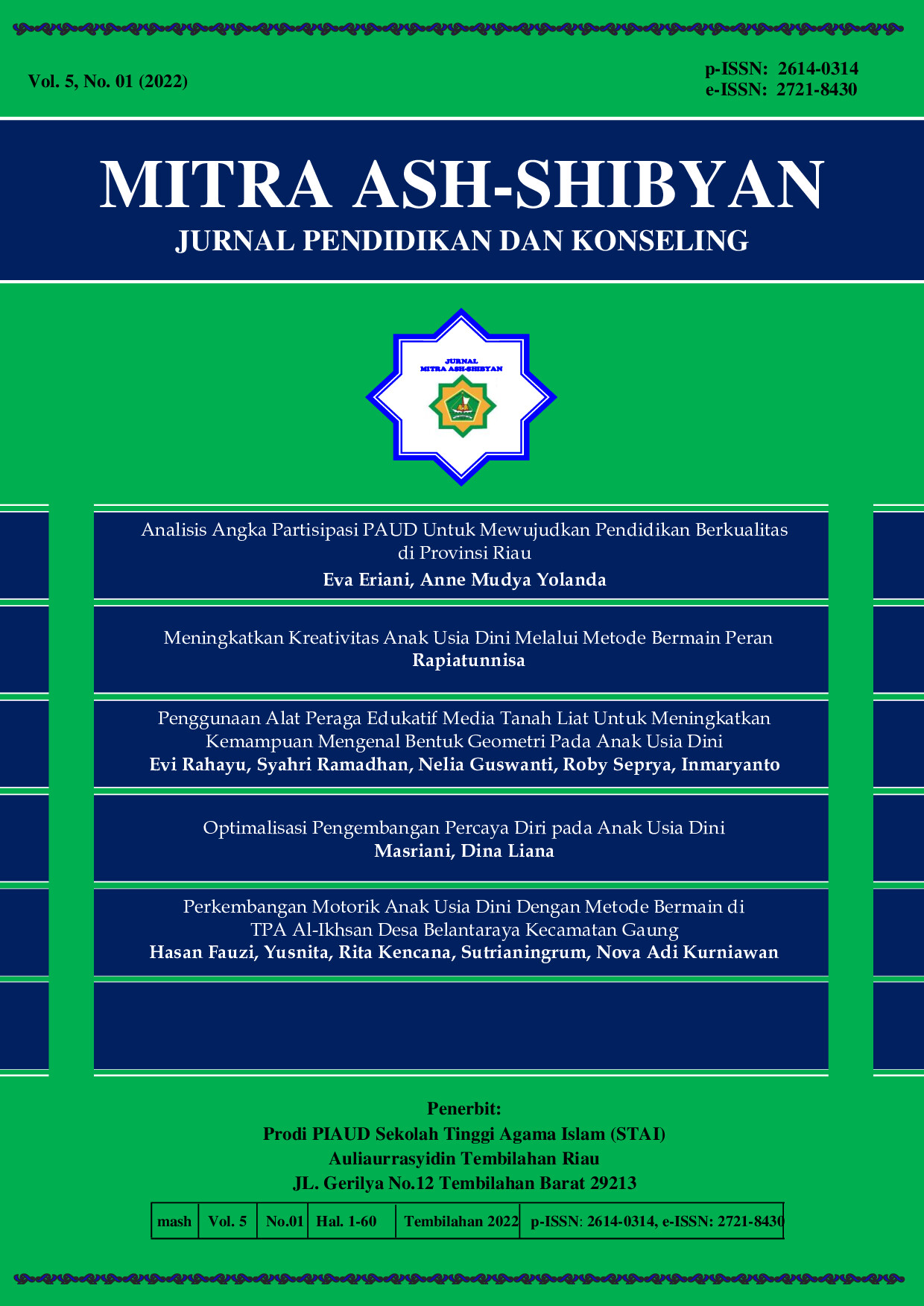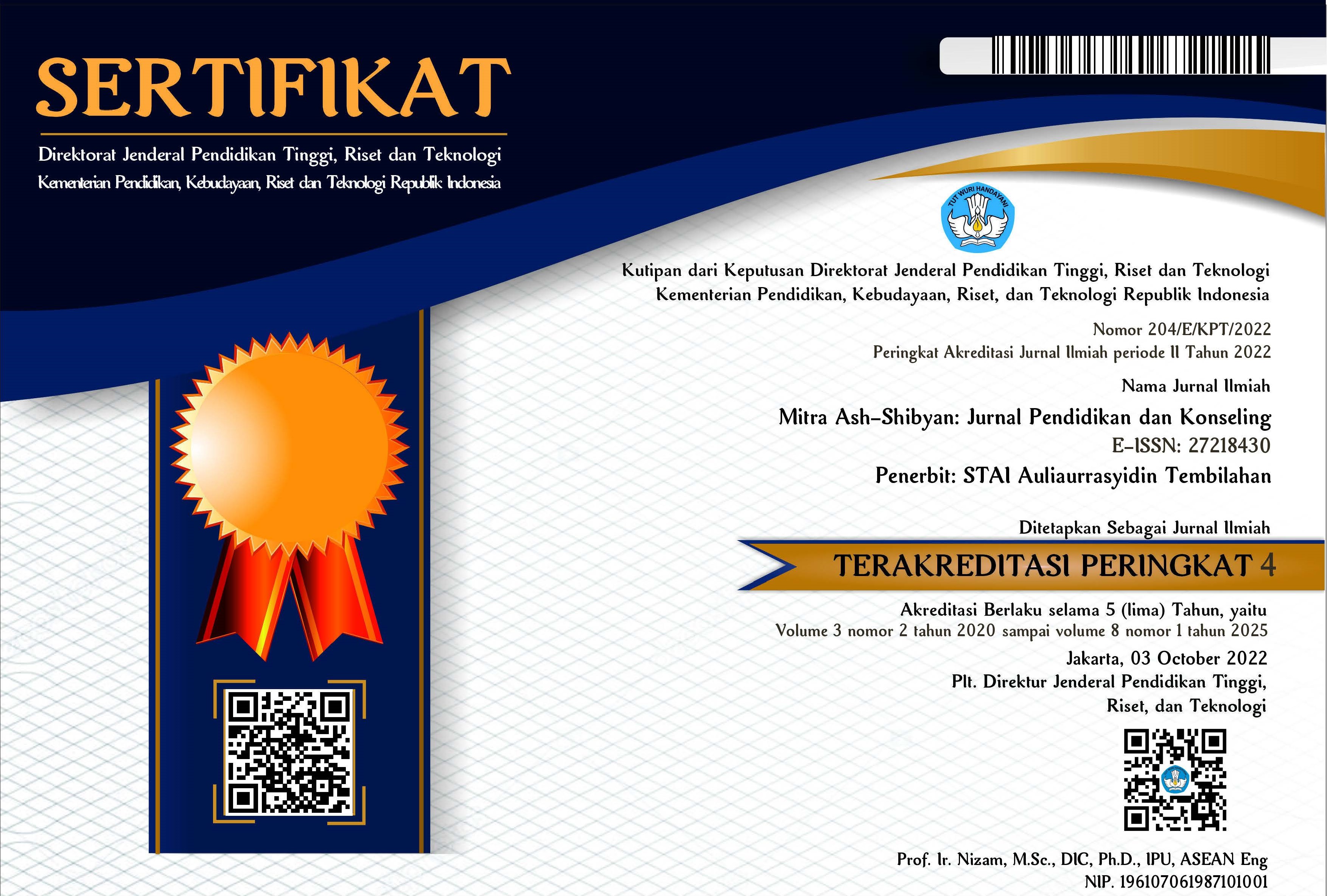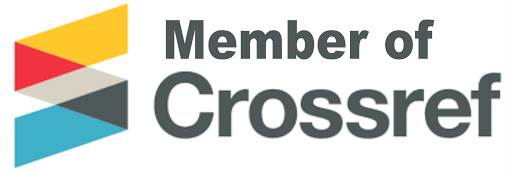Optimalisasi Pengembangan Percaya Diri pada Anak Usia Dini
DOI:
https://doi.org/10.46963/mash.v5i01.475Keywords:
Optimization, Self-confident, Early childhoodAbstract
Children who often receive and get disapproval, fear, and feel disappointment will cause children to lose their confidence. This will continually occur until they grow up if it consents. This will greatly interfere the children's development in many ways. What parents can do in developing children's self-confidence are that they should 1) appreciate whatever the children got, 2) wisely praise in order not to be arrogance, 3 wisely criticize without blaming, 4) support their abilities; never compare them with other children, 5) establish a harmonious relationship. Institutions for early childhood can optimize the development of students’ self-confidence by 1) Familiarizing self-confidence through independent aspects, 2) Familiarizing self-confidence through expressing ideas, and 3) implementing learning methods that aim to increase student's self-confidence.
Downloads
References
Hermansyah. (2000). Metode pengembangan agama, moral, disiplin dan efeksi. Bandung: Depdiknas.
Luluk Nurmawati,Susdarwati, Arum Dwi Rahmawati. (2019). Pengaruh film aniimasi Adit dan Sopo Jarwo terhaadap perkembangan moral. Jurnal Inovatif Ilmu Pendidikan Vol 1 No 2, 137-151.
marlia Ningsih, Rahmah, Herwina. (2018). Pengaruh penayangan media filem animasi Syamil dan Dodo terhadap perkembangan moral anak usia dini. Talenta Journal, 125-138.
Mukhlis Saman, Haryanto. (2014). bandung: Rosdakarya.
Musfiroh, tadkirotun. (2013). Cerita untuk anak usia dini . Yogyakarta: Tiara Wacana.
Sunarto, Ny.B Agung Hartono. (2008). Jakarta: Rineka Cipta.
Downloads
Published
Issue
Section
License
Authors who publish with this journal agree to the following terms:
1. Copyright on any article is retained by the author(s).
2. The author grants the journal, right of first publication with the work simultaneously licensed under a Creative Commons Attribution shareAlike 4.0 International License that allows others to share the work with an acknowledgment of the work’s authorship and initial publication in this journal.
3. Authors are able to enter into separate, additional contractual arrangements for the non-exclusive distribution of the journal’s published version of the work (e.g., post it to an institutional repository or publish it in a book), with an acknowledgment of its initial publication in this journal.
4. Authors are permitted and encouraged to post their work online (e.g., in institutional repositories or on their website) prior to and during the submission process, as it can lead to productive exchanges, as well as earlier and greater citation of published work.
5. The article and any associated published material is distributed under the Creative Commons Attribution-ShareAlike 4.0 International License







2.png)



